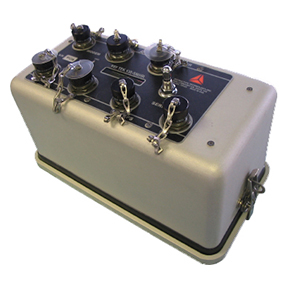130-SMHR Strong Motion Accelerograph
from Reftek Systems Inc
The 130-SMHR is a self contained Accelerograph with built in, force balance, triaxial accelerometer to assist response to damaging earthquakes, volcanoes, and tsunamis and also determine the impact of these seismic events on buildings and structures.
The accelerometer in the 130-SMHR has a full scale range of greater than ± 4g with a dynamic range of 155 dB from DC to 2 Hz. Customers can opt for the six channel system, enabling the deployment of an additional external three axis sensor. With both long and short term deployment in mind the 130-SMHR is equipped with advanced communication features including TCP/IP over Ethernet, Asynchronous Serial, and optional V.90 modem for communication over standard telephone line. An LCD continuously displays state-of-health and status information for shorter deployment periods.

Features
- State-of-the-Art 24-Bit ADC
- Wide Dynamic Range
- Low Noise, Force-Balance accelerometer
- Simultaneous Telemetry/Self Recording
- IP over Ethernet and Asynchronous Serial
- Embedded / Removable Mass Storage
- Low Power
The 130-SMHR is available in an optional command line firmware version, which was specifically designed for structural monitoring applications. Setup and control is accomplished using the strong motion command and control program SMCC, that runs on multiple platforms. This firmware allows control of three relay closure contacts for external alarm activation and can automatically dial the optional modem for remote notification of events and alarms.
The 130-SMHR can also run the standard REFTEK 130 firmware. The standard firmware provides more control options for sample rates and triggering than the command line firmware, but does not include relay control. Setup and control is accomplished with either the iFSC Controller or a desktop computer running RTI. These interfaces allow the user to program the instrument’s operating parameters and perform diagnostic functions.
The robust instrument housing is large enough to contain a backup battery which is sufficient to sustain the instrument for 48 hours in the instance external power is lost.
Product Dimensions
| Physical | Dimensions (L x W x H) | Weight |
|---|---|---|
| 130-SMHR Strong Motion Accelerograph (instrument only) | 235 mm x 203 mm x 337 mm | 4.8kg (without internal battery) |
Technical Specifications
| Dynamic Range: | >138 dB, 24 bit |
|---|---|
| Channels: | 3 or 6 channels |
| Self Noise Level: | 2 counts RMS @ 200 sps |
| Sample Rates (user selectable): | 1000, 500, 250, 200, 125, 100, 50, 40, 20, 10, 5, 1 sps |
| Auxiliary Channels: | Battery, Temperature, Backup Battery |
| Time Base: | GPS Receiver/Clock plus a disciplined oscillator |
| Time Accuracy: | ±10 μsec with GPS locked and a validated 3-D fix 0.1 ppm from 0˚ to 60˚C, 0.2 ppm from –20˚ to 0˚C |
| Input Voltage: | 10 to 16 VDC |
| Operating Power: | 2 W (3-ch. @ 125 sps) |
| Peak Power: | 3 W (DAS & GPS active, writing to CF) |
| Battery Charger: | 15 V, 800 mAmp (internal) |
| Battery: | 12 VDC, sealed lead-acid, 12 AmpHr (optional, internal) |
| Communication: | - Ethernet - Serial - Modem |
| Trigger: | Continuous, Event (STA/LTA), External, Level, Time, Time List, Cross, and Vote Trigger (0.0001 to 4g) |
| Memory: | Compact Flash (8GB or 16GB) Ethernet |
| Data format: | PASSCAL Recording Format |
| Accelerometer Full Scale Range: | > ±4 g |
| Accelerometer Full Scale Output: | ±10V, 20 VPP |
| Accelerometer Dynamic Range: | >155 dB (DC to 2 Hz) |
| Accelerometer Sensitivity: | 2.5 V/g nominal (exact value in EEPROM) |
| Accelerometer Linearity: | < 0.03 % of full scale |
| Accelerometer Cross-axis Sensitivity: | < 0.001 g/g |
| Accelerometer Frequency Response: | Flat DC - >150 Hz |
| Watertight Integrity: | IP 67 |
| Shock: | Survives a 1 meter drop on any axis |
| Operating Temperature: | –20˚C to +70˚C |
